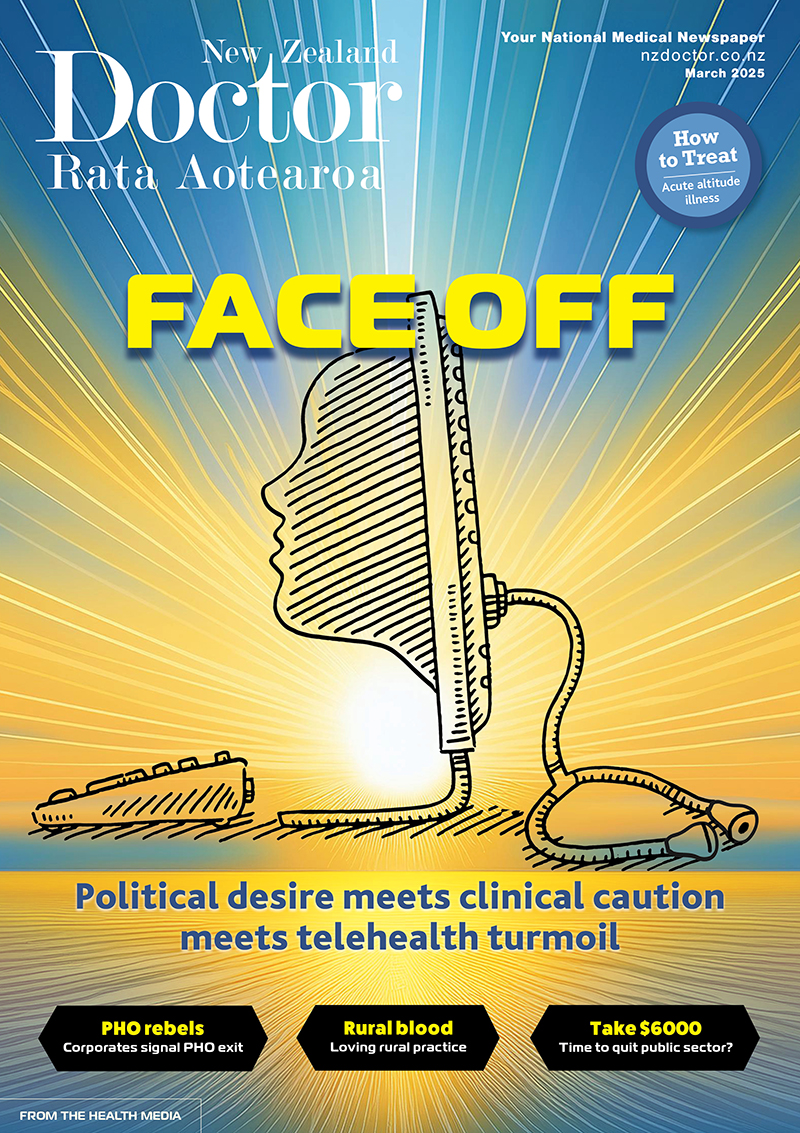Many people travel to high-altitude destinations, meaning clinicians are often faced with questions about how to prevent and treat altitude illness. Update your knowledge with this New Zealand Society of Travel Medicine summary of updated evidence-based guidelines with comments by senior lecturer Jenny Visser – it outlines the best prophylactic regimens, diagnostic approaches and treatment protocols for acute altitude illness
The perennial question: What’s the going rate for GP locums and associates?
The perennial question: What’s the going rate for GP locums and associates?

We are on our summer break and the editorial office is closed until 17 January. In the meantime, please enjoy our Summer Hiatus series, an eclectic mix from our news and clinical archives and articles from The Conversation throughout the year. This article was first published in the 17 February edition
DEAR AUNT MASIE
We’re a large group practice with several associate GPs and wanted to see what the current market rates and expectations are for GPs, both as employees and contractors. We are aware that MAS recently undertook its annual GP remuneration survey and wondered if you can give us some guidance. How much for a GP? Auckland
We recently published our annual GP remuner-ation survey report for locums and associates, which is based on 342 responses from 245 – mainly GP-owned – practices.
In 2020, 64 per cent of practices engaged their locums and associates as contractors (down from 72 per cent in 2019) and 36 per cent as employees. Payment methods varied between contractors and employees as follows:
• Of the contractor GPs 44 per cent were paid a sessional rate; 33 per cent an hourly rate; 21 per cent were paid a commission; and 2 per cent paid a dollar amount per patient seen.
• For the employee GPs 39 per cent were paid a salary; 36 per cent paid an hourly rate; 19 per cent paid a sessional rate; just 5 per cent were paid a commission; and 1 per cent paid a dollar amount per patient seen.
The survey median rates (without considering experience) were as follows:
- For contractor GPs the median hourly rate range was $116–$120, the median sessional rate range was $476– $500 for a four-hour session and median commission rate was 55 per cent.
- For employee GPs the median hourly rate range was $96–$100, the median sessional rate range was $400– $425 for a four-hour session and the median commission rate was also 55 per cent.
- For salaried employee GPs there was a median full-time equivalent (40 hours per week) salary range of $191,000–$200,000.
Median contractor hourly and sessional rates were 18 per cent higher than employee rates (see table).
This difference is in line with what we would expect given that contractors do not receive employee benefits such as annual leave, statutory holidays, sick leave, or KiwiSaver employer contributions, and have more risk without protections under the Employment Relations Act.
As previously, most practices stated they value experience over other factors and our survey (see table) confirmed that most rates are lower for less-experienced GPs.
When engaging a GP, either as a contractor or employee, you should be clear on how much time you expect will be spent on patient contact and how much will be paid paperwork time.
Our survey results showed the median patient contact time over a paid four-hour session was three hours 15 minutes and the median number of patients expected to be seen in a four-hour session was 12.
These rates are a general guide only and there will be many other factors that influence GP remuneration.
MAS staff are happy to send you a copy of the MAS GP remuneration survey report or answer any questions you have on practice issues or dilemmas. Email business@mas.co.nz
Shaun Phelan is business advisory manager at MAS
We're publishing this article as a FREE READ so it is FREE to read and EASY to share more widely. Please support us and our journalism –subscribe here



